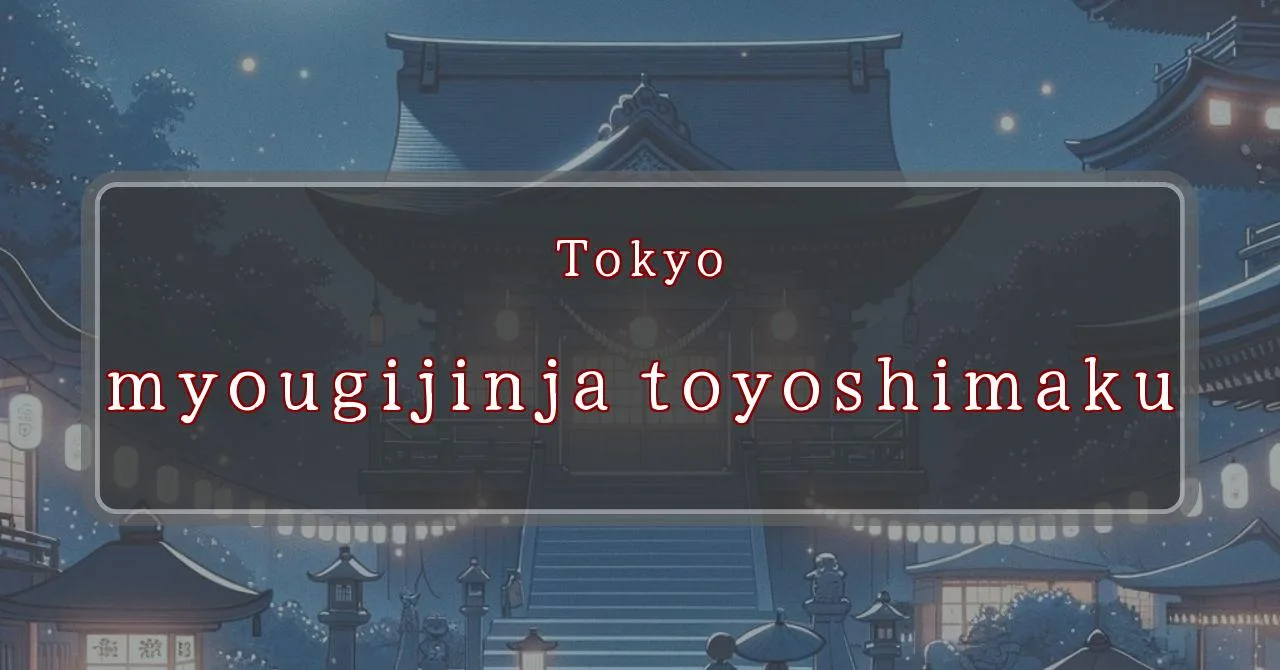Enchanting lights adorn the night at Myogi Shrine
Basic Information
Myogi Shrine is a Shinto shrine located in Komagome, Toshima Ward, Tokyo, Japan. It is dedicated to the god of war and victory, Take-mikazuchi-no-mikoto, and is known for its association with the samurai warrior Ota Dokan.
- Address: 3-16-16 Komagome, Toshima-ku, Tokyo 170-0003
- Phone Number: 03-3917-1938
- Access: 3-minute walk from the north exit of JR Komagome Station
- Festival Days: The Saturday and Sunday before Respect-for-the-Aged Day (usually in late September)
Main Events and Attractions of the Festival
The Myogi Shrine Festival is a lively and colorful event that attracts many visitors each year. The main events and attractions of the festival include:
Mikoshi Procession
The mikoshi procession is the highlight of the Myogi Shrine Festival. A mikoshi is a portable shrine that is carried through the streets by a team of people. The mikoshi of Myogi Shrine is particularly large and impressive, and it is carried by a team of over 100 people.
Lion Dance
The lion dance is another popular attraction at the Myogi Shrine Festival. The dance is performed by two people, one wearing a lion head and the other wearing a lion body. The lion dance is said to bring good luck and fortune.
Taiko Drumming
Taiko drumming is a traditional Japanese form of drumming that is often performed at festivals. At the Myogi Shrine Festival, taiko drummers perform a variety of rhythms and beats, creating a lively and energetic atmosphere.
Food Stalls
No Japanese festival is complete without food stalls! At the Myogi Shrine Festival, you can find a wide variety of food stalls selling everything from traditional Japanese dishes to international cuisine.
Games and Activities
There are also a number of games and activities for children and adults to enjoy at the Myogi Shrine Festival. These include traditional Japanese games like ring toss and goldfish scooping, as well as more modern games like face painting and balloon animals.
Blessings and Deities
Myogi Shrine is dedicated to the god of war and victory, Take-mikazuchi-no-mikoto. He is said to be the deity who helped the legendary Japanese warrior Yamato Takeru defeat his enemies. Myogi Shrine is also dedicated to the god of agriculture, Ōkuninushi-no-mikoto, and the goddess of food, Ukanomitama-no-mikoto.
- Take-mikazuchi-no-mikoto: God of war and victory
- Ōkuninushi-no-mikoto: God of agriculture
- Ukanomitama-no-mikoto: Goddess of food
Origin and History
The origins of Myogi Shrine are unclear, but it is believed to have been founded in the 7th century. The shrine was originally located in a different part of Tokyo, but it was moved to its current location in Komagome in 1642.
- Founded: 7th century
- Moved to current location: 1642
Tips and Notes for Visitors
Here are some tips and notes for visitors to Myogi Shrine:
- The shrine is open daily from 9:00 AM to 5:00 PM.
- Admission is free.
- The shrine is a popular destination for weddings and other ceremonies.
- There is a small museum on the shrine grounds that displays artifacts related to the shrine’s history.
- The shrine is located in a quiet residential neighborhood. Please be respectful of the neighbors when visiting.
Parking Information
There is no parking lot at Myogi Shrine. However, there are several public parking lots located nearby.
- Komagome Station Parking Lot: 3-minute walk from the shrine
- Toshima Civic Center Parking Lot: 5-minute walk from the shrine
- Komagome Park Parking Lot: 10-minute walk from the shrine
Popular Stalls and Food Carts in Recent Years
| Type of Stall | Description |
|---|---|
| Takoyaki | A staple at Japanese festivals. Characterized by a crispy outside and a creamy inside. |
| Jaga Butter | A simple yet popular snack of hot potatoes lavishly topped with melted butter. |
| Baby Castella | Small castella cakes, sweet and fluffy treats enjoyed by children and adults alike. |
| Grilled Ayu with Salt | Fresh ayu fish grilled whole with salt, a savory taste of Japanese summer. |
| Shaapin | A unique gourmet item influenced by foreign cuisine, with a chewy skin wrapping the filling. |
| Okonomiyaki | A Japanese grilled dish where you often choose your own ingredients for a personalized flavor. |
| Cotton Candy | A fluffy, sweet snack that’s extremely popular with children. |
| Chocolate Banana | A banana coated in chocolate, a fun and visually appealing dessert. |
| Kushiyaki | Various types of ingredients skewered and grilled, an easy-to-enjoy snack. |
| Yakisoba | Fried noodles mixed with a special sauce, a fast food favorite in Japan. |



